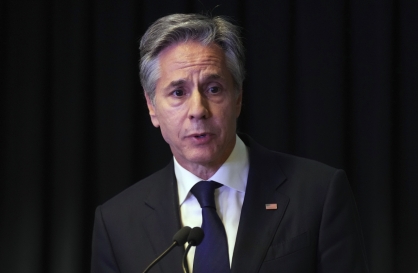Palais De Tokyo’s site-specific exhibition reinvents once-abandoned public space
By Shim Woo-hyunPublished : Sept. 9, 2018 - 16:36
One of the 2018 Gwangju Biennale’s Pavilion projects, “Today Will Happen” has reinvented a historical site -- the Gwangju Civic Center.
The Gwangju Civic Center, completed in 1971, was used as a venue for cultural events. During the Gwangju Democratization Movement in 1980, the center served as citizen militias’ headquarters. The space has since remained largely unused, even after a renovation in 2014; only its office space was recently in use.

The exhibition “Today Will Happen,” co-curated by Palais de Tokyo President Jean de Loisy and Asia Culture Institute’s art director of exhibition Kim Sung-won, has turned the abandoned space into a space for a unique art experience. Loisy participated in the first Gwangju Biennale in 1995 as a curator.
“Today Will Happen” is an excerpt from Michel Houellebecq’s poem “The Art of Struggle,” which was given to 12 participating artists as a starting point for their works. The artists have tried to translate, reinterpret and deconstruct the language of the poem as part of their works.
Visitors encounter the poem in two different languages, written in English and Korean, at the ticket booth. In addition to the two, a recording of a recitation of the poem by Houellebecq follows as visitors enter the building. There is a sense of Houellebecq’s poem spreading out and filling the building.
However, as you walk into the space, the atmosphere rendered by the poem becomes diluted and disrupted as languages of other works intervene.

Hao Ni’s “Structure Study V,” an installation work that has assembled mass-produced wind instruments into a large steel structure, gushes out dissonant sounds, which represent the physicality of human breath.
Leonard Martin’s “Echappee guere,” designed after the delicate yet also complex structure of language used in James Joyce’s “Ulysses,” includes the sounds of Dubliners reading parts of the book, as well as those that are not identifiable.
On-site live performances accompany the works on display, such as a live performance by twin brothers from Korea as part of works by artist Tarik Kiswanson, who presented two mannequin sculptures and video work. The young twins’ recital of a written script also occupies the exhibition space, making an interesting counterpoint to Houellebecq’s poem recitation.

Artist Jang Young-gyu has also organized pansori performances, Korea’s traditional genre of musical storytelling. A group of pansori singers are to sing around the exhibition space, forming a dramatic contrast to Houellebecq’s poem.
By Shim Woo-hyun (ws@heraldcorp.com)



















